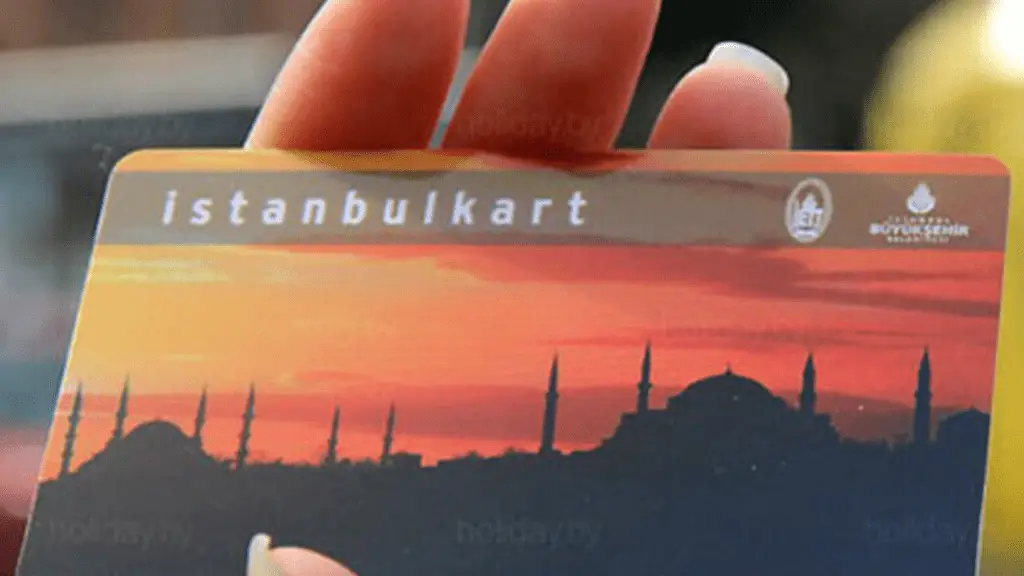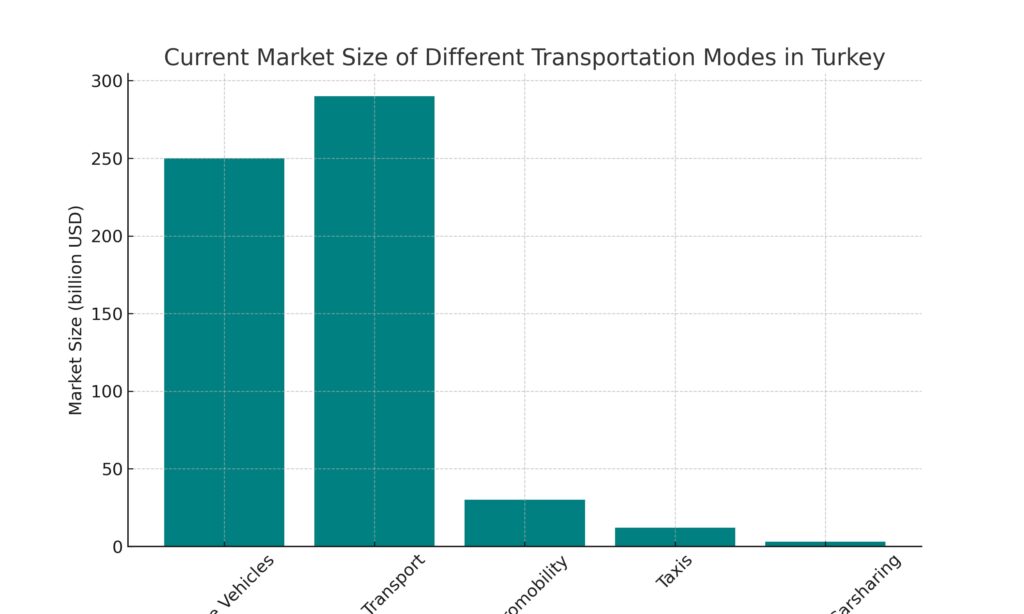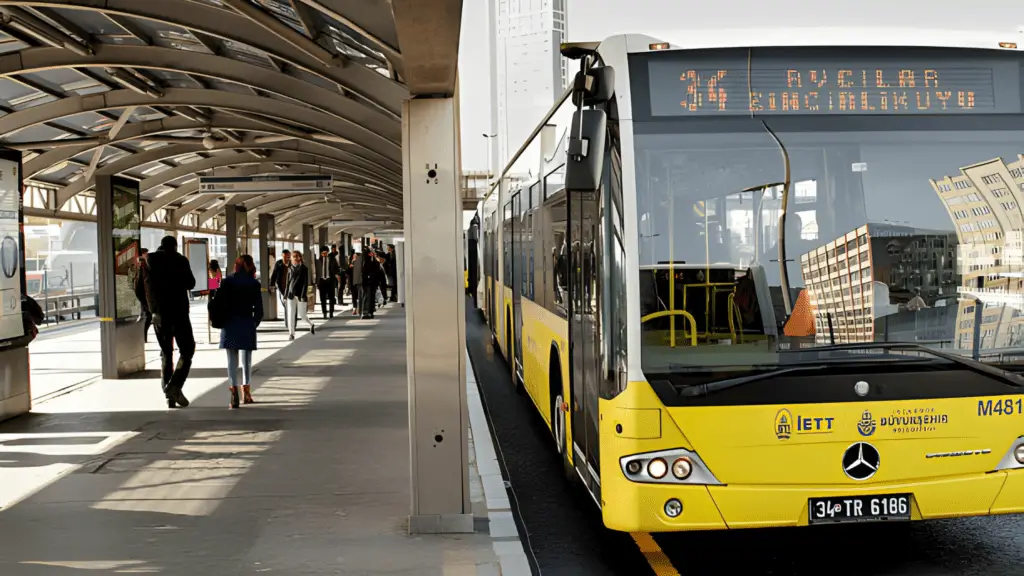Explore our comprehensive Turkey public transportation guide for hassle-free travel. Discover tips, routes, and insights to navigate buses, trains, and more across Turkey’s cities and scenic destinations efficiently and affordably. Istanbul, a city that straddles two continents, is as diverse in its transportation options as it is in its cultural heritage. Here’s a guide to help you make the most of Istanbul’s buses, trams, ferries, and metro.
Turkey Public Transportation Guide
Buses – The Backbone of Istanbul’s Transport
Istanbul’s bus network is extensive, covering virtually every part of the city. Managed primarily by İETT (Istanbul Electricity, Tramway, and Tunnel General Management), the buses are frequent, affordable, and relatively easy to use.
Tips for Bus Travel:
- Get an Istanbulkart: This smart card is essential for all public transport in Istanbul. It’s available at kiosks and vending machines at major bus stations, metro stations, and airports.
- Plan Your Route: Use apps like Moovit or Google Maps to find the best bus routes.
- Be Prepared for Crowds: Buses can get crowded, especially during peak hours, so plan your travel accordingly.

Trams – A Scenic and Efficient Option
Trams in Istanbul offer not just a means of transportation but a journey through history and culture, especially the T1 line that passes through many tourist attractions.
Making the Most of Tram Travel:
- Tourist-Friendly Routes: The T1 line covers many major sights including Sultanahmet, Hagia Sophia, and the Grand Bazaar.
- Accessibility: Trams are a great option for those with mobility issues since they are easier to board than buses.
Ferries – A Unique Way to Cross Continents
One of the most picturesque and relaxing ways to travel in Istanbul is by ferry. The city’s ferry system connects the European and Asian sides, offering stunning views of the Bosphorus.
Ferry Travel Tips:
- Enjoy the Scenery: Take a break from the bustling city and enjoy tea or a snack on board while taking in the views.
- Use Istanbulkart: Like buses and trams, ferries also accept Istanbulkart.
- Check the Schedule: Ferry times vary, so check the schedule in advance, especially if you’re planning to catch a sunset cruise.

Metro – Fast and Reliable
Istanbul’s metro system is a fast and efficient way to avoid traffic and cover long distances quickly.
Navigating the Metro:
- Network Expansion: The metro network is expanding, with new lines being added. Keep an eye on the latest maps.
- Connectivity: Many metro stations connect with tram and ferry lines, making it easy to switch modes of transport.
- Safety and Cleanliness: The metro is known for being clean and safe, with regular security checks.
Insights for Istanbul’s Public Transport
One of the great advantages of Istanbul’s public transport system is the ease with which you can switch between different modes of transport. For example, you can take a ferry across the Bosphorus and then hop on a tram to reach your destination. This interconnectivity not only saves time but also offers a more comprehensive experience of the city.
Night Transport Options
Istanbul’s nightlife is vibrant, and thankfully, its public transport caters to late-night travelers as well. Night buses (marked with an ‘N’) operate on major routes. The metro and trams have limited night services, mainly on weekends, so it’s good to plan accordingly if you’re out late.
Cultural Etiquette on Public Transport
- Respect Seating Arrangements: Some buses and trams have designated seating for elderly, pregnant, or disabled passengers. Always give up these seats if needed.
- Queue Culture: While boarding buses and ferries, locals tend to form queues. It’s polite to follow suit.
- Silence on the Metro: It’s common practice to keep noise levels down when on the metro.

Navigating with Language Barriers
While English is widely spoken in tourist areas, this might not be the case on some public transport. Here are a few tips to overcome language barriers:
- Use Translation Apps: Have a translation app handy to understand signs and announcements.
- Carry a Map: A physical or digital map with English and Turkish names for stops can be very helpful.
- Learn Basic Turkish Phrases: Knowing a few phrases in Turkish, like “Teşekkür ederim” (Thank you) or “Bu ne kadar?” (How much?), can go a long way.
Safety Tips
- Beware of Pickpockets: Like in any major city, be mindful of your belongings, especially in crowded buses or trams.
- Know Your Stop: Especially on buses and trams, it’s essential to know your stop as they don’t always stop at every station unless requested.
- Emergency Services: In case of emergencies, the number to call in Turkey is 112.
Exploring Beyond the City Center
Don’t hesitate to use public transport to explore beyond the usual tourist spots. Places like the Princes’ Islands are a ferry ride away and offer a unique glimpse into the quieter, more serene side of Istanbul life.
The Art of Hailing a Dolmuş in Turkey
Traveling in Turkey offers an array of experiences, and one of the most authentic and interesting is riding a dolmuş. The dolmuş, a cross between a taxi and a minibus, is a unique mode of transport prevalent across Turkey. For the uninitiated, navigating this system can be a bit of a puzzle. This guide aims to demystify the dolmuş and offer helpful tips for first-time users.
The Dolmuş
A dolmuş (pronounced “dol-moosh”) is a shared vehicle, often a minibus or a large car, that operates more flexibly than a regular bus but less so than a taxi. It’s an economical and social way to travel, offering a more intimate glimpse into the daily life of Turks.
Key Features:
- Shared Rides: Passengers share the ride with others, making it cost-effective.
- Flexible Routes: While they have general routes, dolmuşes don’t have fixed stops like buses. They stop wherever a passenger requests.
- Frequency: Dolmuşes usually operate on a regular schedule, but they depart once they’re full, which can mean a faster or slower journey depending on the time of day.

How to Use a Dolmuş
Finding a Dolmuş
- Locating Stands: Dolmuş stands are usually found near bus stations, in city centers, or at major crossroads.
- Identifying the Vehicle: Look for minibusses or cars labeled ‘dolmuş’ and check the destination sign on the windshield.
Hailing and Boarding
- Hailing: You can hail a dolmuş on the street if it’s not full. Simply signal to the driver as you would for a taxi.
- Boarding: Enter quickly, as dolmuşes tend to minimize stoppage time. It’s customary to greet others as you board.
Payment and Routes
- Paying the Fare: Fares are usually fixed based on distance. Pay the driver when you board or when you get off, depending on the region.
- Communicating Your Stop: Inform the driver a little before your destination. Saying “inecek var” (Someone’s getting off) is a common way to signal that you want to disembark.
Dolmuş Etiquette
- Seat Sharing: Be prepared to sit closely with other passengers. Space is maximized in a dolmuş.
- Passing the Fare: If you’re seated far from the driver, pass your fare to the person in front of you. They will pass it to the driver and return any change the same way.
- Helping with Doors: In smaller dolmuşes, if you’re sitting near the door, you might be expected to open and close it for other passengers.
- Conversation: Feel free to engage in conversation with fellow passengers, but always be respectful of those who prefer silence.

Tips for a Smooth Ride
- Carry Small Change: Having the exact fare or small bills makes the payment process easier.
- Avoid Rush Hours: Dolmuşes can get crowded during peak hours, so travel outside these times if you prefer a more comfortable ride.
- Learn Basic Turkish Phrases: Knowing simple phrases can greatly enhance your dolmuş experience, especially in less touristy areas.
- Be Alert: Stops are not announced, so keep an eye on your route or use a GPS app to track your location.
Final Thoughts
Navigating Istanbul’s public transport might seem daunting at first, but it’s a rich part of the experience in this historic city. With a little preparation and an Istanbulkart in hand, you’ll find that getting around is not just easy, but also adds to the charm of exploring Istanbul. Remember to check the latest schedules and routes, as the city is always evolving. Happy travels!


